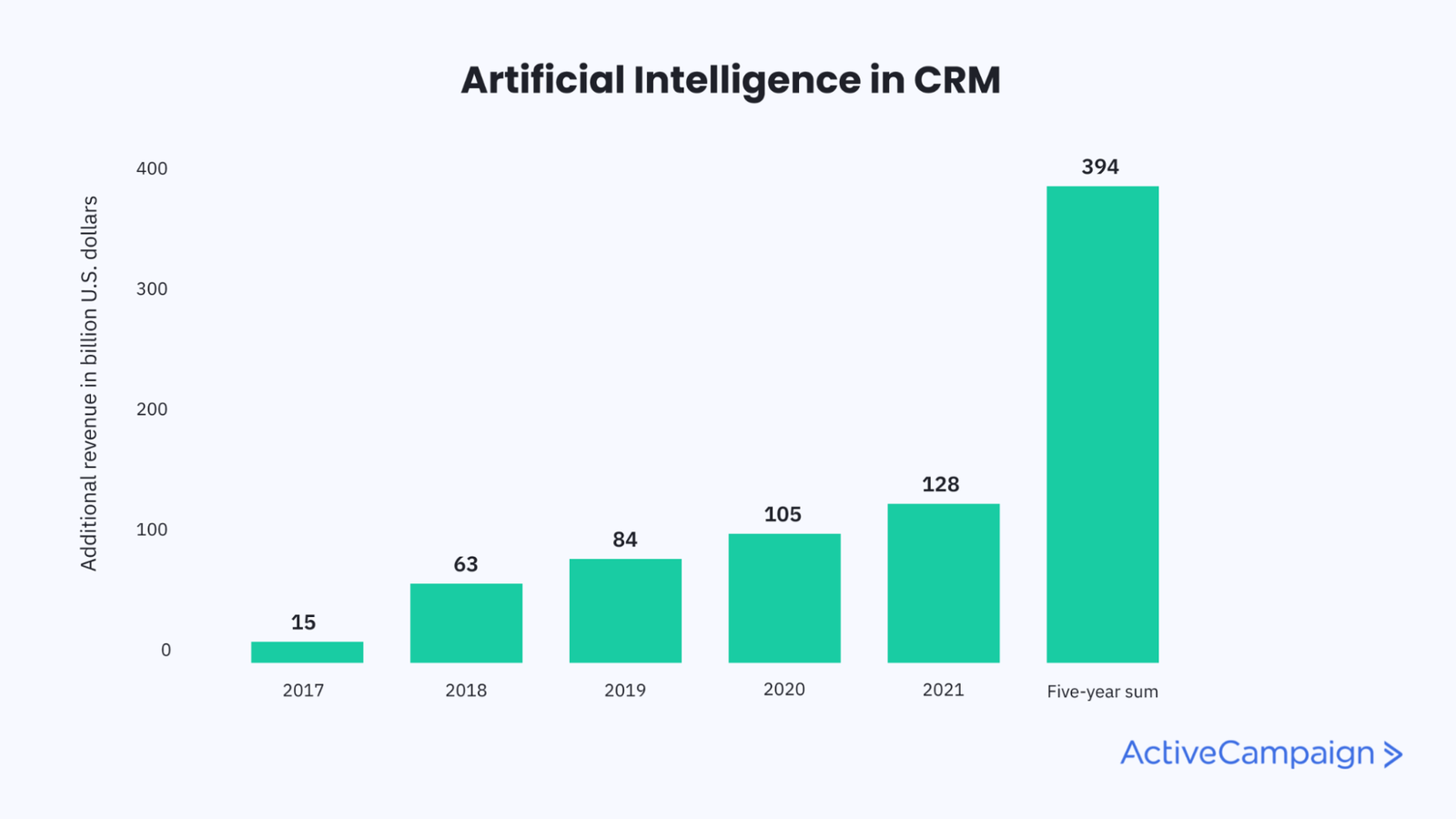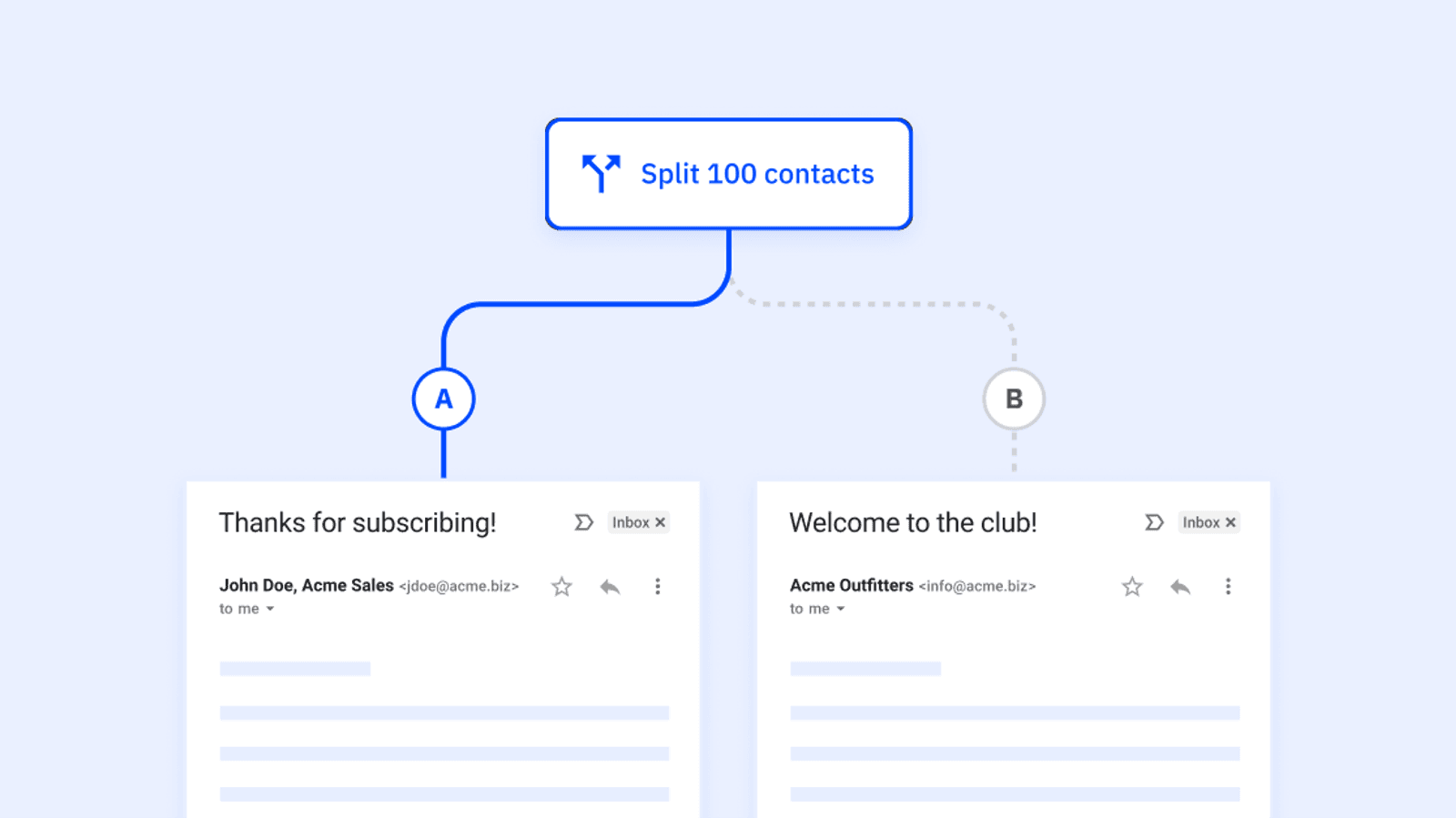No tool has made a bigger impact on sales than customer relationship management (CRM) software. Salespeople no longer have to flip through Rolodexes to pull up a contact’s details or waste time searching for hand-written notes.
CRM software has become a sales powerhouse, giving companies a complete view of their customers and delivering actionable insights in real time.
But the world of CRM is constantly changing. It has to in order to keep up with emerging technologies and meet higher customer expectations.
So what does the future of CRM look like?
In this article, we’ll explore how CRM may change and what to expect in the coming years. We’ll also look at how you can make the most of your CRM software to grow your business and prepare for the future.
The future of CRM: 6 considerations
CRMs have played a pivotal role in helping companies manage customer data and streamline the entire sales cycle from a centralized location.
91% of organizations with more than ten employees now use a CRM. But as with practically every industry, CRM software is constantly evolving.
Let’s take a closer look at some of the future trends in CRM and how you can prepare for them.
1. More personalized customer experiences
Customer expectations have changed.
According to a 2020 Salesforce report, 80% of consumers say that the experience a company provides is just as important as its products or services. 52% now expect companies to offer personalized offers — up from 49% in 2019.
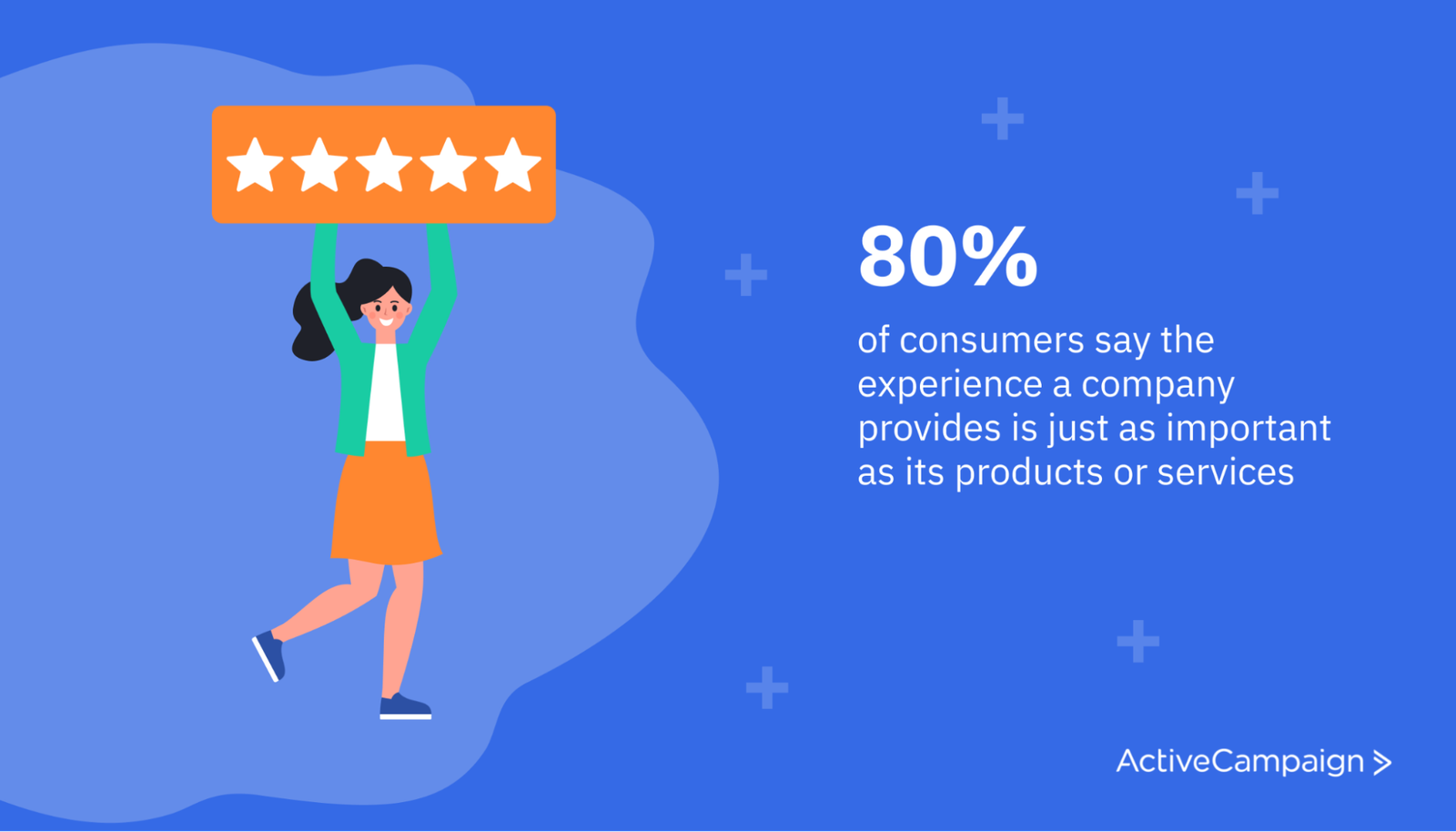
Sending personalized messages to your prospects can help you close more deals.
But executing an effective personalization strategy is easier said than done. In fact, many marketing leaders struggle with delivering personalized experiences to their customers.
So how can marketers succeed with personalization?
“[Marketers] should focus on addressing longstanding personalization challenges by channeling their existing collection and use of customer data toward customer needs that align with business goals.”
Noah Elkin, Chief of Research at GartnerThe keyphrase here is “use of customer data,” which is where a CRM comes in.
The future of CRM will facilitate personalization at scale. With the data and insights you’re already collecting, you’ll be able to personalize your messaging to individual customers.
For example, if a visitor has expressed interest in a particular product, you can set up a drip campaign that sends personalized offers instead of generic emails. This will increase the relevance of your messages and make them more impactful.
Here’s how you can deliver more personalized experiences:
- Collect more first-party data: First-party data is data that you collect from your customers — interests, purchase history, etc. Ways to collect this type of data include conducting surveys, using online forms, and reviewing your analytics.
- Enable site tracking: Site tracking is a feature that gives you insights into what your contacts are doing on your site. It allows for advanced segmentation. For example, if a contact in your CRM has repeatedly visited your pricing page, someone from the sales team can reach out.
- Be transparent: Consumers are willing to share personal data in exchange for more personalized experiences. But you also need to be transparent with how you plan to use that data. Make sure to detail how you collect and use customer data in your privacy policy.
2. Greater integration across all channels
When data exists in silos, teams aren’t getting the full picture, which can impact their ability to make informed decisions. 58% of respondents agree or strongly agree that customer data is in too many sources to make sense of it.
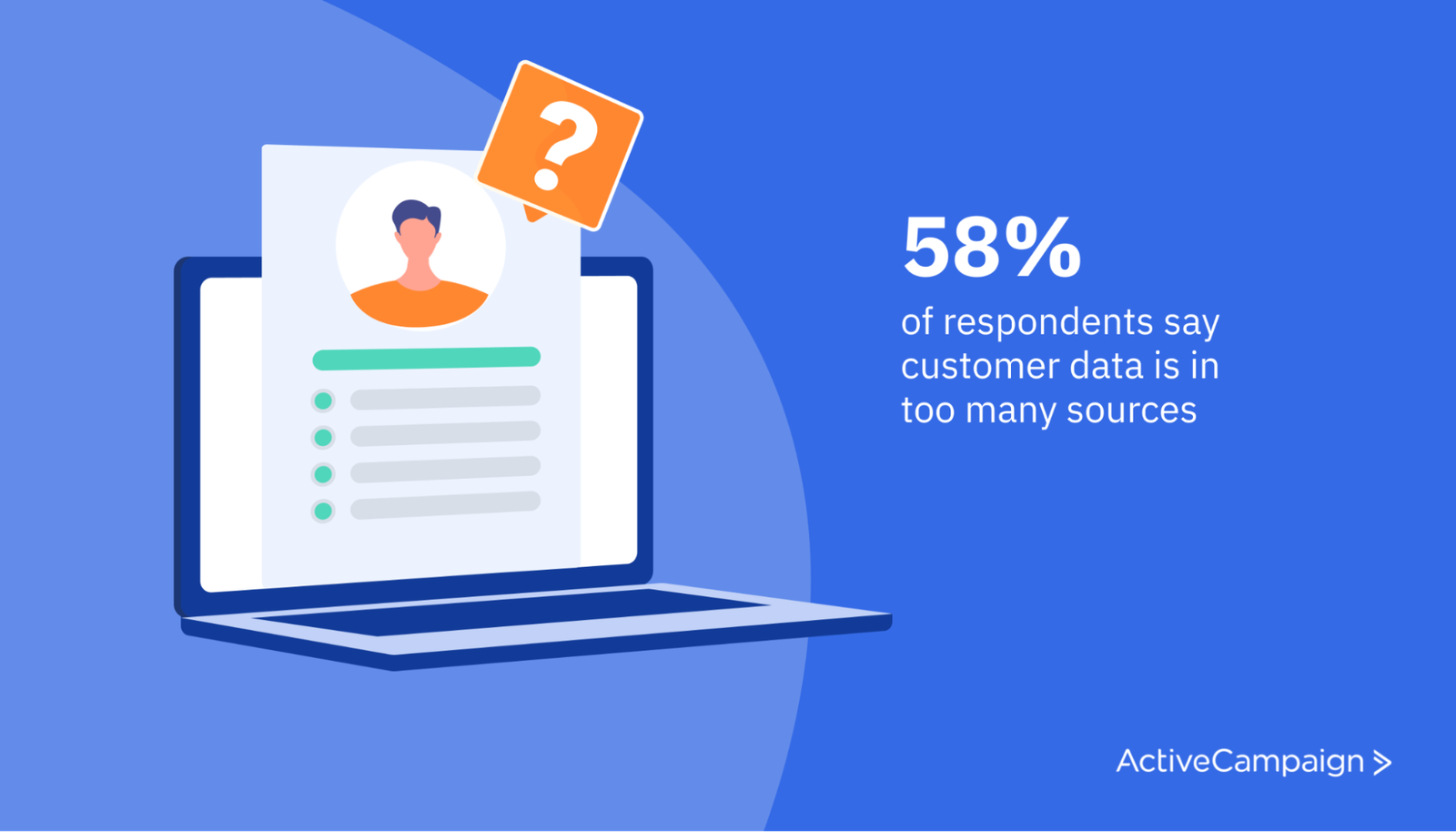
As a result, decision-makers frequently have to switch between different applications to properly understand their data. This can hurt collaboration and slow down productivity.
Integrated CRM solutions are already available, and will continue to offer deeper integrations with other systems to provide a single source of truth across marketing, sales, and customer service.
When your employees use a central platform, they won’t have to search for information in multiple places. This will allow them to work more productively and deliver more engaging customer experiences.
Here’s how you can take steps to integrate your channels:
- Keep your data in one place: Data silos can prevent your team from getting a complete picture of your customers. Choose a CRM that integrates with the tools you already use to create a single source of truth for the whole team.
- Align your teams: 87% of sales and marketing leaders say alignment between sales and marketing teams is key to critical business growth. Set shared goals, agree on a customer persona, and develop strategies together to align your teams.
- Evaluate your marketing tech stack: Conduct a thorough audit of your technology stack and use only those that align with your objectives.
3. More advanced artificial intelligence capabilities
More CRM systems will use artificial intelligence (AI) to enable business strategies. AI uses volumes of unstructured data to help organizations make smarter and faster decisions.
This is something that we’re already seeing with major players in the market.
Salesforce Einstein, for example, is an AI built for Salesforce’s cloud-based CRM. It uses AI to analyze data from different sources and predict where new leads will come from. It can also help customers resolve issues on real-time channels, like chat.
The increased adoption of AI in CRM will help companies in the U.S. gain an estimated $394 billion in the next five years.
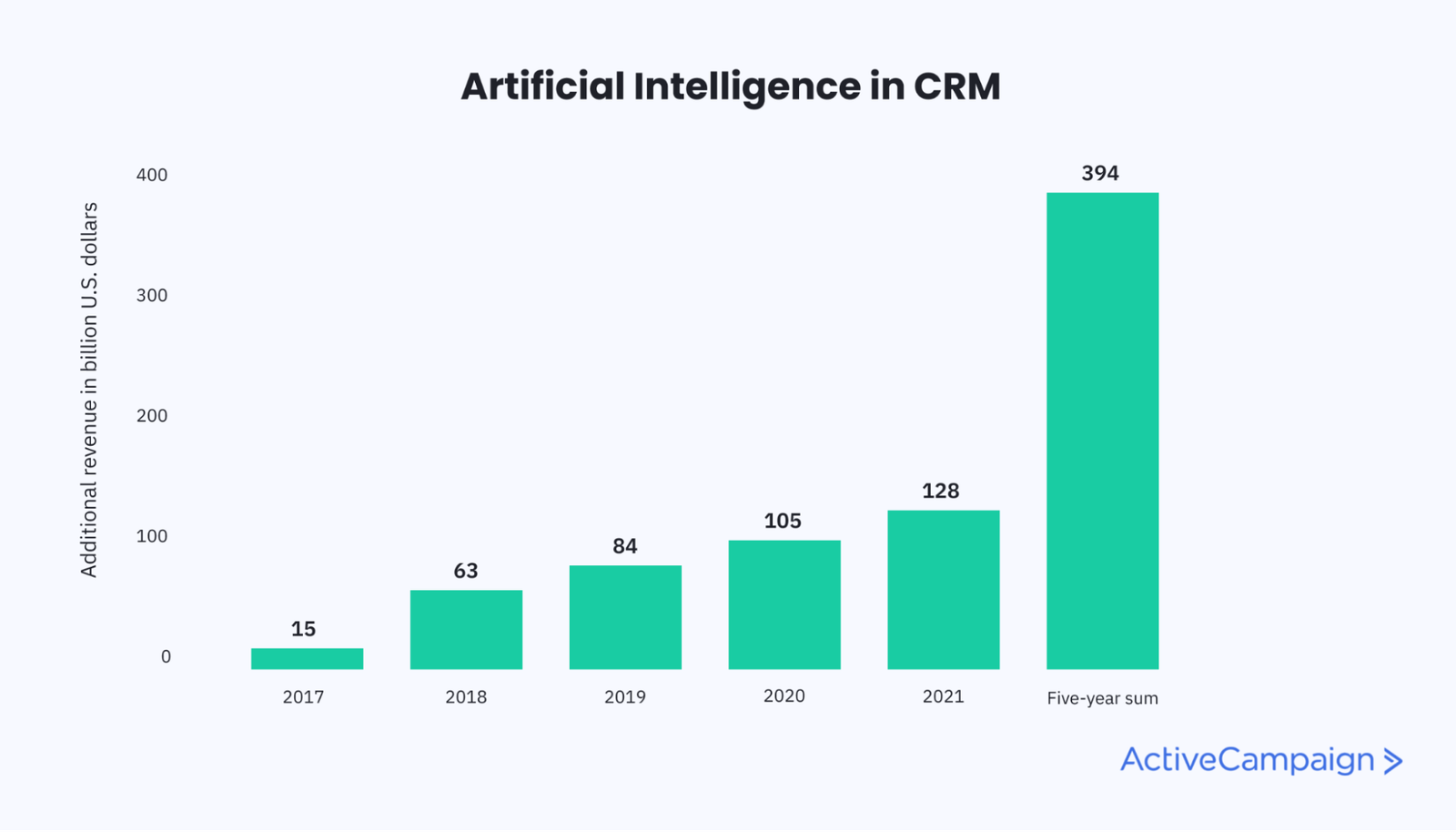
That figure will continue to increase as CRMs become more sophisticated.
AI makes CRMs smarter and more powerful — it improves forecasting, uncovers more opportunities, and helps your team make smarter decisions.
Here’s how you can start leveraging AI in your sales process:
- Implement lead scoring: One way to leverage your data is with lead scoring — assigning values to leads based on their buying intentions. AI can automate this process and even detect trends based on won deals. With ActiveCampaign, someone on the sales team can receive notifications when leads hit certain scores and reach out right away.
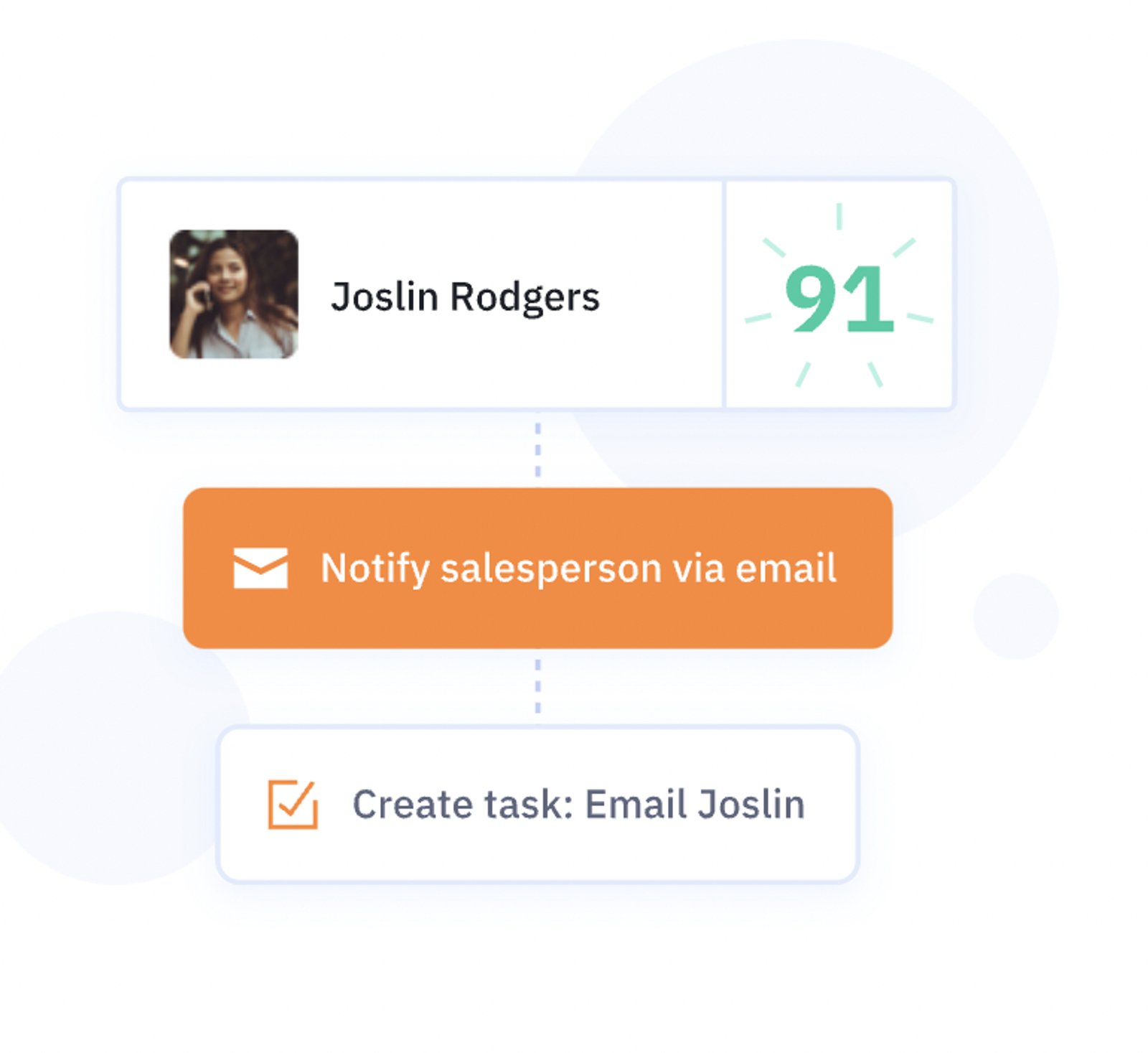
- Predict win probability: Win probability uses machine learning, a subset of AI, to tell you how likely a lead is to convert. It helps your sales team determine where they should focus their efforts.
How does it work? ActiveCampaign uses data from your “Won” and “Lost” sales pipelines to make data-backed predictions for future deals. You can configure these values based on what matters to your business.
4. More robust automation workflows
Employees spend just 27% of their time on the skilled work they were hired for. They devote a significant portion of their time (60%) to “work about work” — tasks like clarifying work details, hunting down documents, updating spreadsheets, etc.

When sales and marketing teams spend time on “work about work” tasks, it leaves them with less time for more strategic initiatives like researching different markets and developing new campaigns.
More CRMs today offer automation features.
For example, with ActiveCampaign’s marketing automation software, you can set up automated email workflows that nurture your leads. You can even segment your contacts and deliver personalized follow-ups based on specific actions.
Another example is using automation to recover abandoned carts — when a customer adds a product to their cart but doesn’t complete their purchase.
With an automated email series, you can bring shoppers back to your site with a gentle reminder — or entice them with a coupon — and recover more lost sales.

One CRM trend we’ll see in the future is companies automating more of their sales processes and marketing campaigns. Not only will this help close more deals, but it’ll also free up employees to focus on higher-value work.
Here’s how you can start leveraging automation:
- Create a customer journey map: A customer journey map illustrates the various touchpoints that prospects go through with your company. With the customer journey mapped out, you can set up automated workflows that nurture your leads.
- Produce great content: A CRM can help you deliver the right content to contacts based on the stage they’re in, but it can’t create that content for you. Use your customer journey map to better understand your audience and create different types of content for each touchpoint.
- Provide training: To get the most out of marketing automation, it’s important to provide adequate training on how it works. Have your sales and marketing team go through any available resources before they start setting up automated workflows.
5. More self-service options
Customers increasingly prefer to troubleshoot and solve issues on their own — it’s often much faster than reaching out to a customer service representative.
88% of consumers now expect brands to have an online self-service portal.

By offering a self-service portal, you make it easier for customers to find information quickly. The most common types are FAQ pages, knowledge bases, and community forums.
However, most self-service portals are standalone. They don’t integrate with other systems, which limits a company’s visibility into the issues that customers are experiencing.
Another trend we’ll see is the increased integration of self-service systems in CRM software. An example is the use of chatbots that allow customers to ask questions, check their order status, and even receive personalized offers.
Teams can also see a contact’s history in a CRM platform and use those insights to anticipate their needs. For example, if an account has visited a cancellation page, a customer service rep can reach out and try to retain those accounts.
Here’s how you can integrate self-service into existing channels:
- Integrate your chatbot with your CRM: Chatbots are more powerful when you connect them with your CRM solution. With Active Campaign’s Conversations, you can engage with your visitors and create new accounts when a contact fills out a form or engages with an agent. From there, you can leverage automated workflows.

- Unify communications: If you offer support through different channels, make sure to choose a CRM with a unified inbox. This will help keep customer service representatives on the same page.
6. Increased adoption of a mobile CRM
As mobile device usage continues to increase, it’s no surprise that more companies are adopting the use of a mobile CRM.
The global mobile CRM market grew 11% in 2019 to $15 billion worldwide and is expected to grow at an annual rate of 13% until 2029.
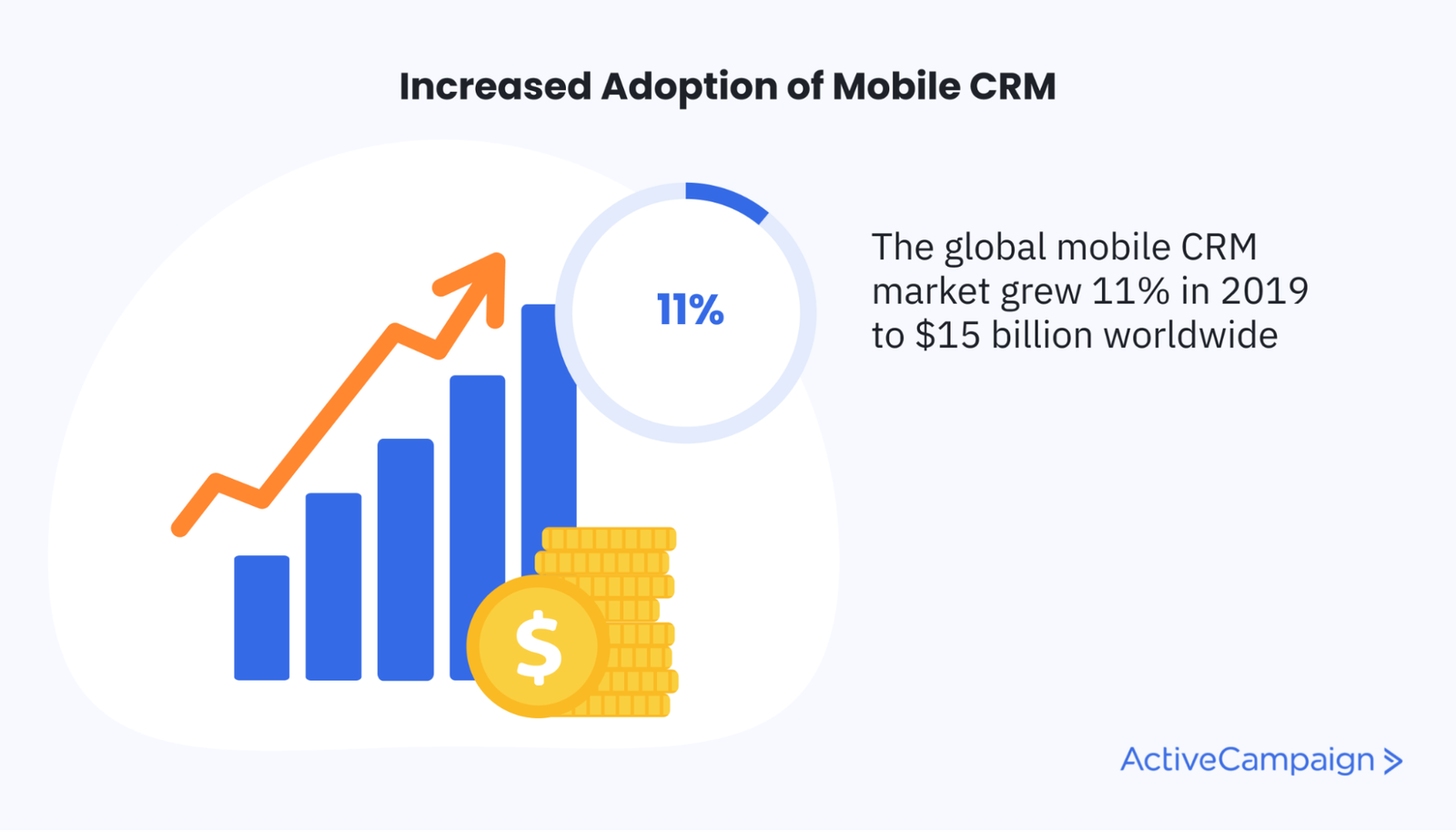
With a mobile CRM, your sales, marketing, and customer service teams can access customer data and work productively without being tied to a desktop.
What impact has this had on sales?
65% of companies that use a mobile CRM are reaching their sales targets, while only 22% of those with non-mobile CRMs are reaching the same goals.
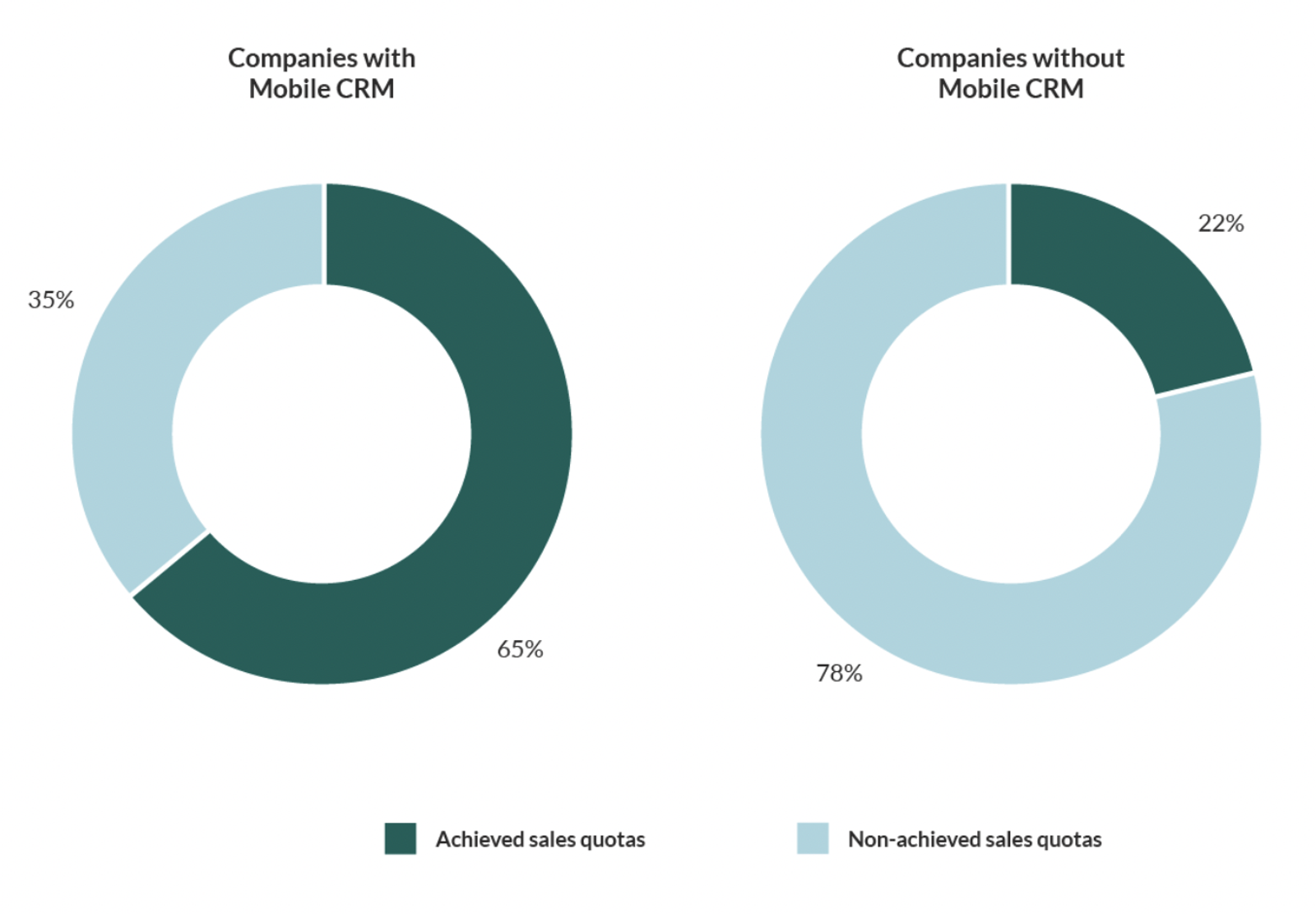
Given these figures, we’ll continue to see more companies adopt mobile CRMs.
Here’s how your company can maximize the value of a mobile CRM:
- Choose a CRM with built-in mobility: Choose a CRM that offers mobile apps for platforms like iOS and Android devices. The ActiveCampaign mobile app makes it easy for your sales team to stay on top of their work on the go. This includes managing customer accounts, creating new deals, tracking and assigning tasks, and much more.
- Provide the devices: Sales teams may hesitate to install a mobile CRM on their personal devices. To increase adoption rates, provide employees with a mobile device and pre-configure the CRM application. Providing work devices can also reduce security risks.
- Provide in-house training: Provide training to help your sales team make the most of a mobile CRM. Most software vendors have an education or learning center. As an example, here’s a guide we’ve created for the mobile version of our Deals CRM. Have your team go through any learning materials to ensure they know how to use specific features on mobile devices.
Get ready for the future of CRM
As more consumers expect personalized interactions, companies must be able to meet these expectations or risk losing sales.
Implementing a CRM system that can deliver personalized messages at scale, integrate with your existing tools, and automate processes will help position your company for the future.
Request a demo today to see how our CRM platform can support the future growth of your company and help your team increase customer engagement.

